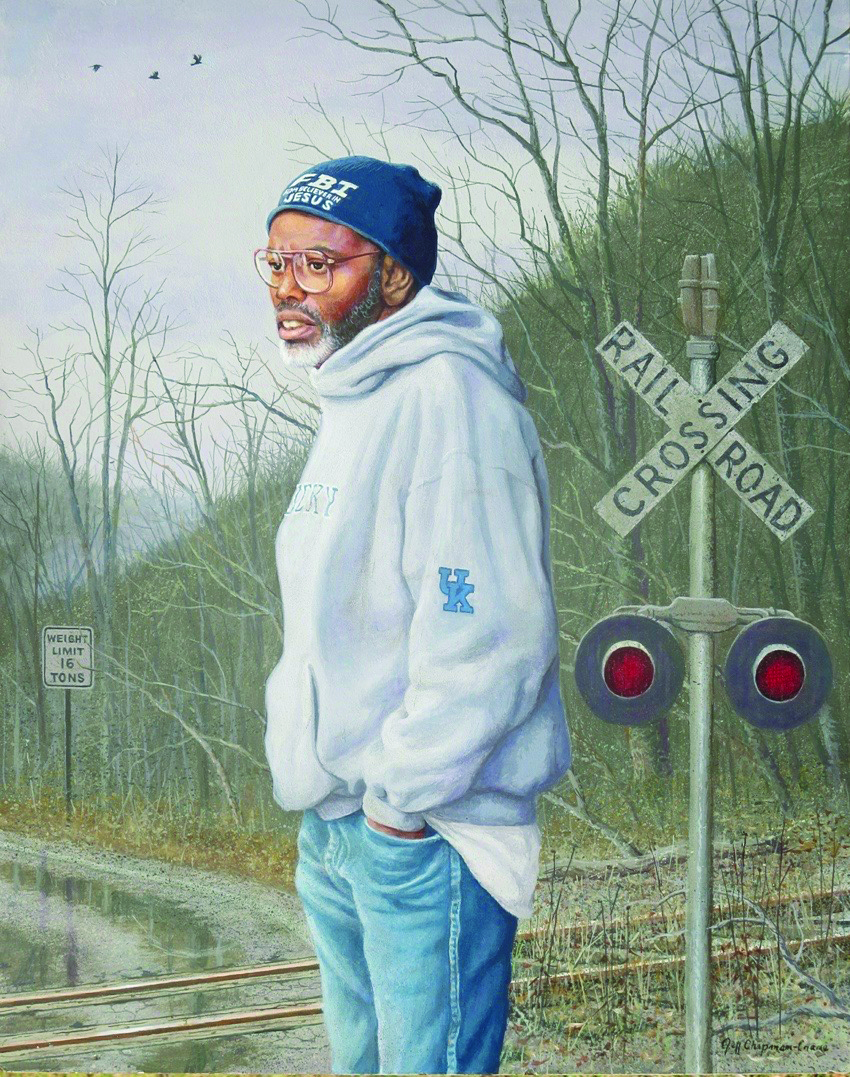

Jeff Chapman-Crane's 'Crossings' 22.5x18, Egg Tempra, 2018
By Bob Alexander
Bob Alexander is a former features editor for The Knoxville News-Sentinel. He lives in Abingdon, Virginia.
When Jeff Chapman-Crane was handed his high school diploma in 1971, he says he walked off the stage knowing exactly what he wanted to do for the rest of his life.
He was going to be an artist.
“It was never so much a question ofwhatI would do as a career but ratherhowto go about it,” he says.
“I was blessed to have a truly great art teacher, Don Hilton, at Ketron High School in Kingsport.This was my only formal training in art, and I give Mr. Hilton all the credit for teaching me everything I would need to know to become a professional artist.”
Hilton encouraged his young students to follow their dreams, and that’s what Chapman-Crane did. “Don gave me the tools I needed to develop my natural talent at a young age. I can’t give him too much credit for my success.”
Now living in Kentucky, Chapman-Crane is considered one of the finest visual artists in the Southern Appalachian region. With canvas and brush, he captures realistic impressions of the people, culture and landscapes he loves.
One of his paintings, titled “Crossings,” is among the artworks featured in the William King Museum of Art’s biennial exhibition, “From These Hills.” The painting is a portrait of a friend, Stanford Adams. In thepainting, he places Adams in a cold winter landscape, standing at a railroad crossing. The lonely scene, the artist says, represents “someone at a crossroads facing choices to be made. I feel as if we’ve all been in that situation at different times in our lives.”
“Crossings” offers clues, some subtle, some not, to the painting’s geographical setting. The subject is wearing a University of Kentucky sweatshirt, and there’s the number 16 on a bridge weight-limit sign.
“I chose 16 tons as a reference to the song made famous by Tennessee Ernie Ford,” says Chapman-Crane. “The song is about loading 16 tons of coal per day, and I felt that number further established the setting as the eastern Kentucky coal fields.”
Chapman-Crane’s painting style is known as photorealism. “While it is true,” he says, “that I create very realistic paintings from photographs that I take, I don’t use the term ‘photorealism’ to describe my style,” he says. “It is never my intention to copy a photograph detail for detail.I will often combine images from several photos into the painting, and I also make many changes from the photograph, leaving things out and adding some things to the painted image. The photos are simply reference material.”
He says he prefers the photo-realistic style for a simple reason. “I want what I express to be as clearly understood as possible.I want the love I feel for Appalachia, the land, the people and the culture, to be as unambiguous as I can make it.”
Chapman-Crane says his long pilgrimage as an artist “has run the gamut of human experience and emotion.It has been a long and arduous journey, filled with failures and disappointments, financial hardships and lean times.But there have been many surprising twists and unexpected successes.
“There has been sadness and joy, loneliness and wonderful companionships, including with my life companion, Sharman, and our son, Evan.As difficult as it has sometimes been, it’s a journey I would embark upon all over again.”
However, the old “feast or famine” cliché about making a living as an artist has proven to be true, he admits. “In those difficult times it’s not always been easy to resist the temptation to give up and get a ‘real’ job, or to focus on work that has more commercial appeal, but somehow I’ve managed to stay afloat through it all.”
During the half century Chapman-Crane has been painting and showing his work, he has been featured in numerous art shows and galleries around the country, as well as being featured in books and on magazine covers. In 2020 he was awarded a grant from the Pollock-Krasner Foundation, one of only 125 such grants awarded worldwide. More recently, he has been focusing on marketing his work through his website (www.jeffchapmancrane).
But, he adds, “the accomplishment which I find most gratifying is simply that I’ve been able to continue doing this work for over 50 years now.”
Which other painters working today does he most admire?“Actually, I am more familiar with, and inspired by contemporary Appalachian photographers,” he says, “like Kenneth Murray, Earl Carter and Malcolm Wilson, and, from an earlier era, William ‘Picture Man’ Mullins.”
What advice would he give others hoping to blaze creative career paths? “Beyond the practical need to find a career that provides a reliable paycheck,
I would tell other aspiring artists to endeavor to remain true to their own art, whatever style or form that takes,” he says. “There will be many naysayers and critics and unbelievers who may seek to dissuade you from your true calling, but don’t be derailed by that.Tell your own narrative, because if you do that your art will be as authentic and unique as your story itself.”